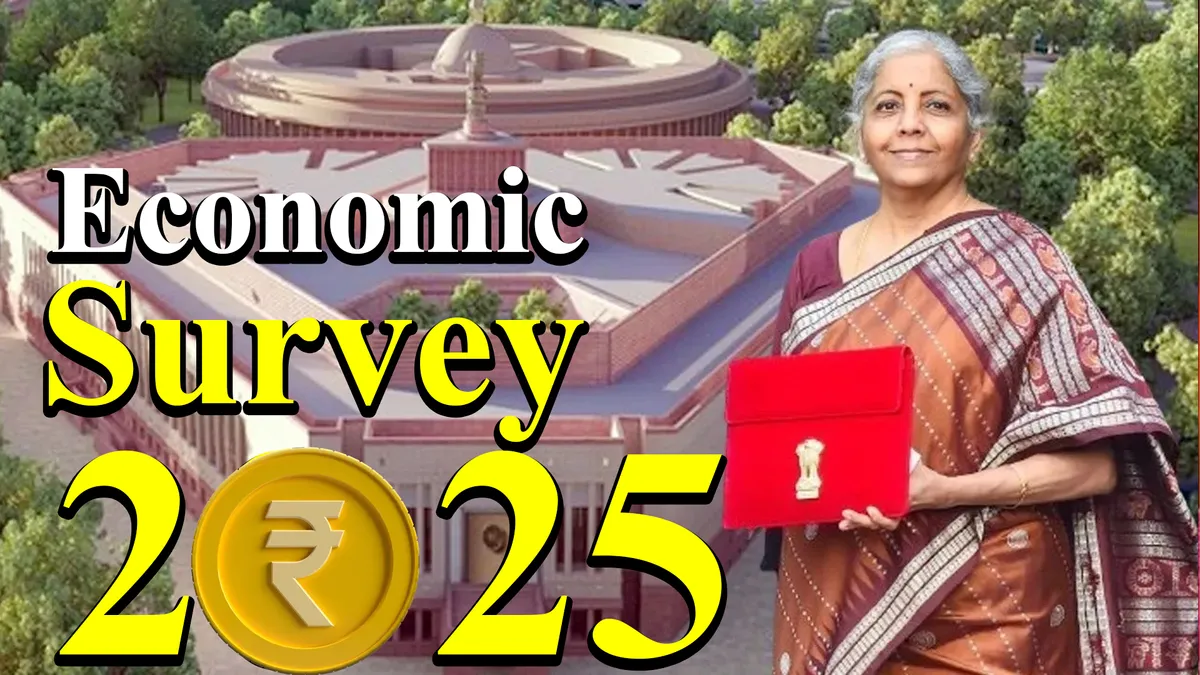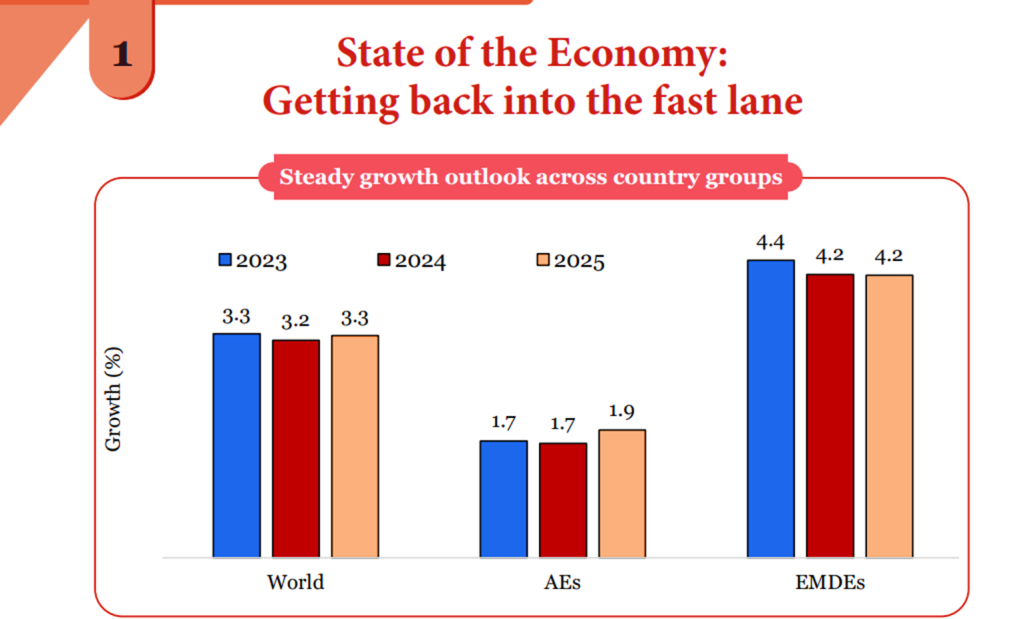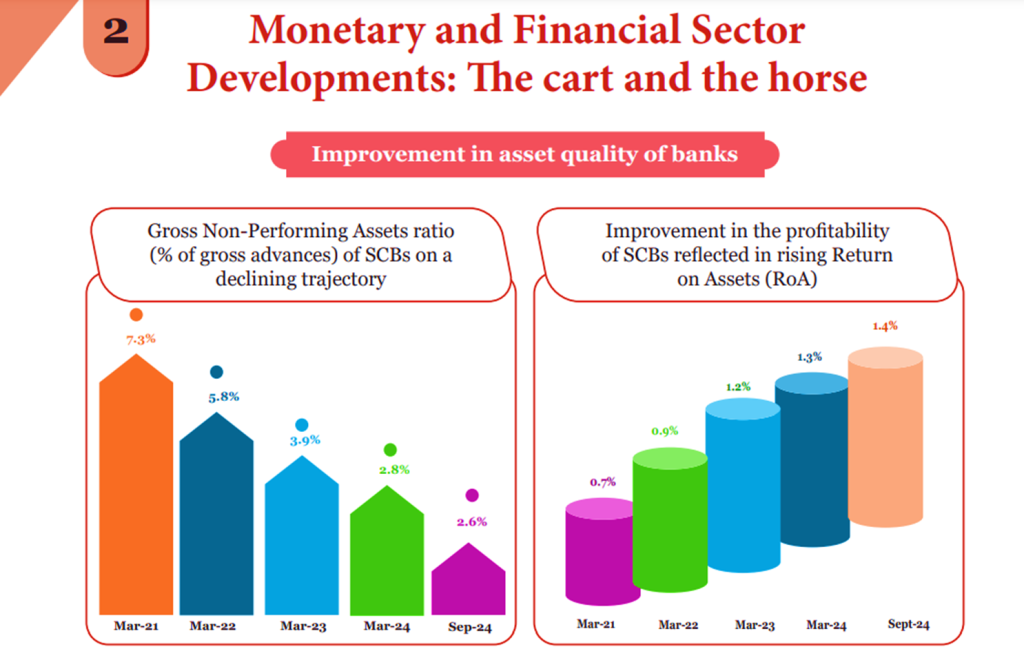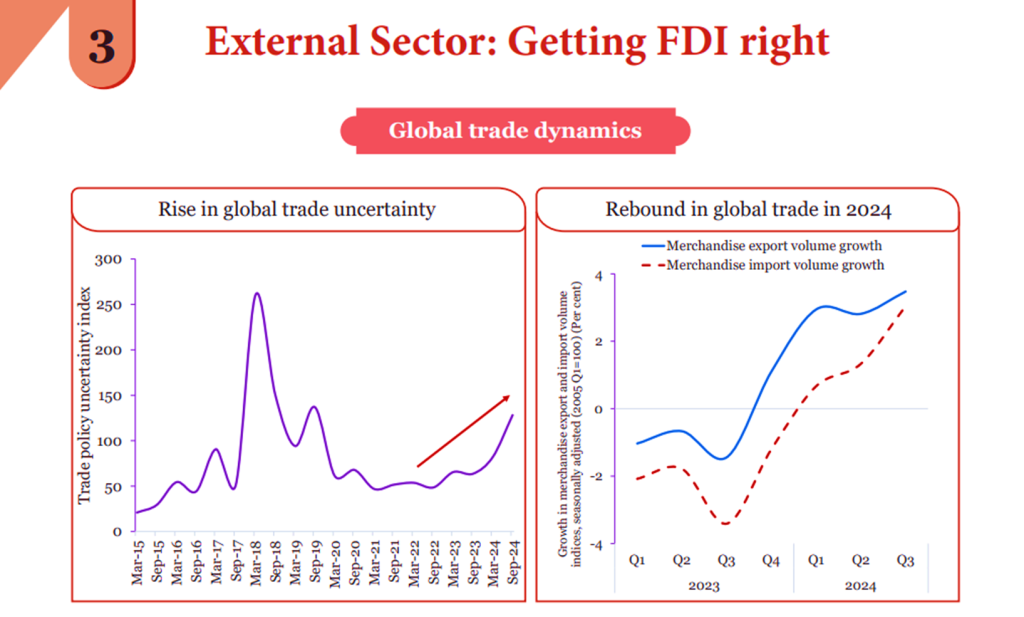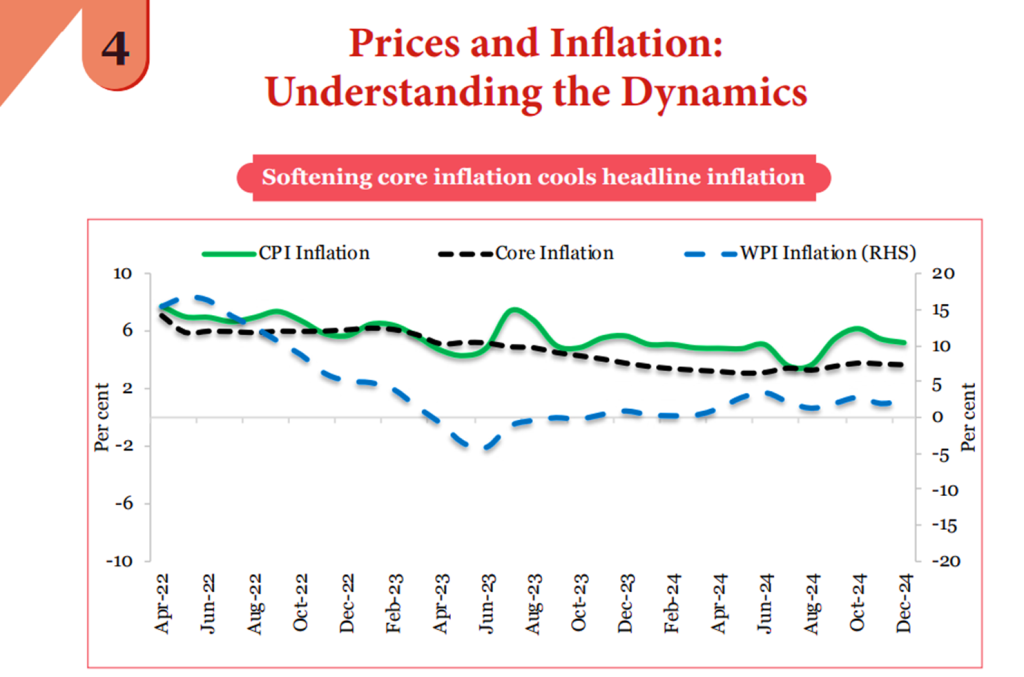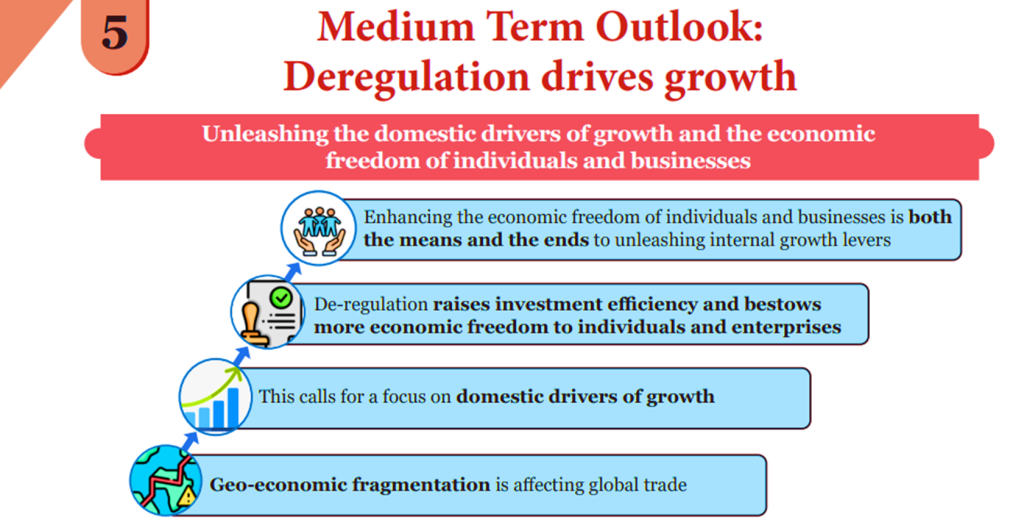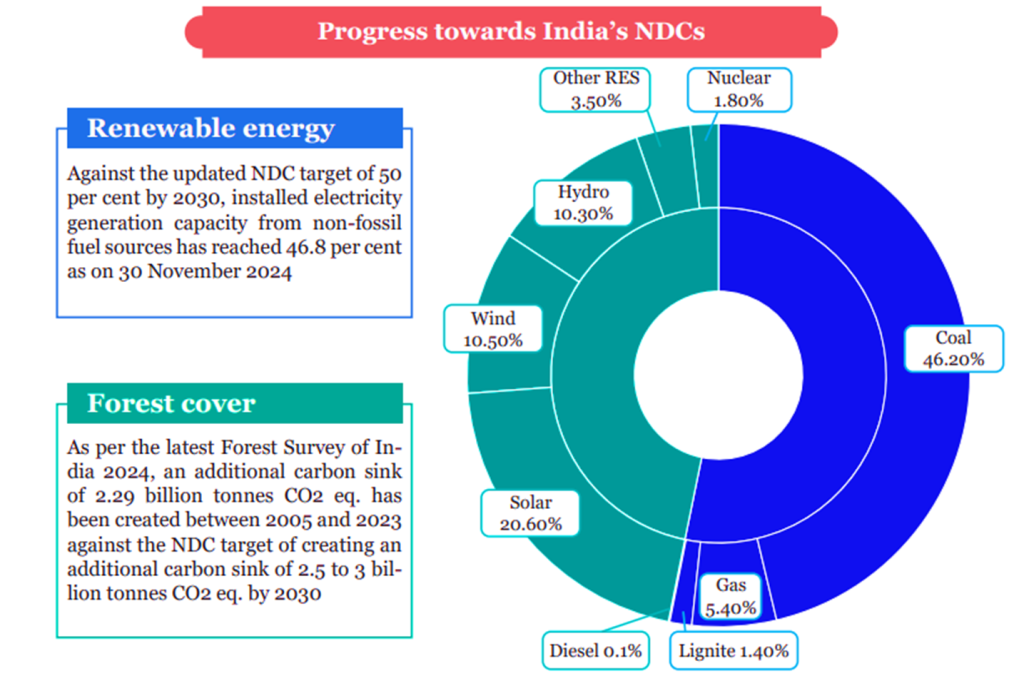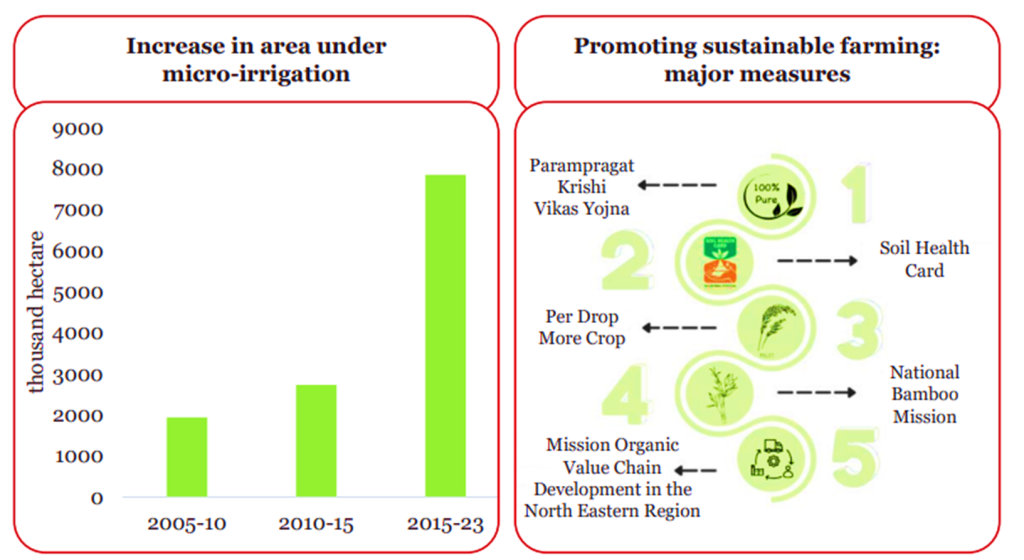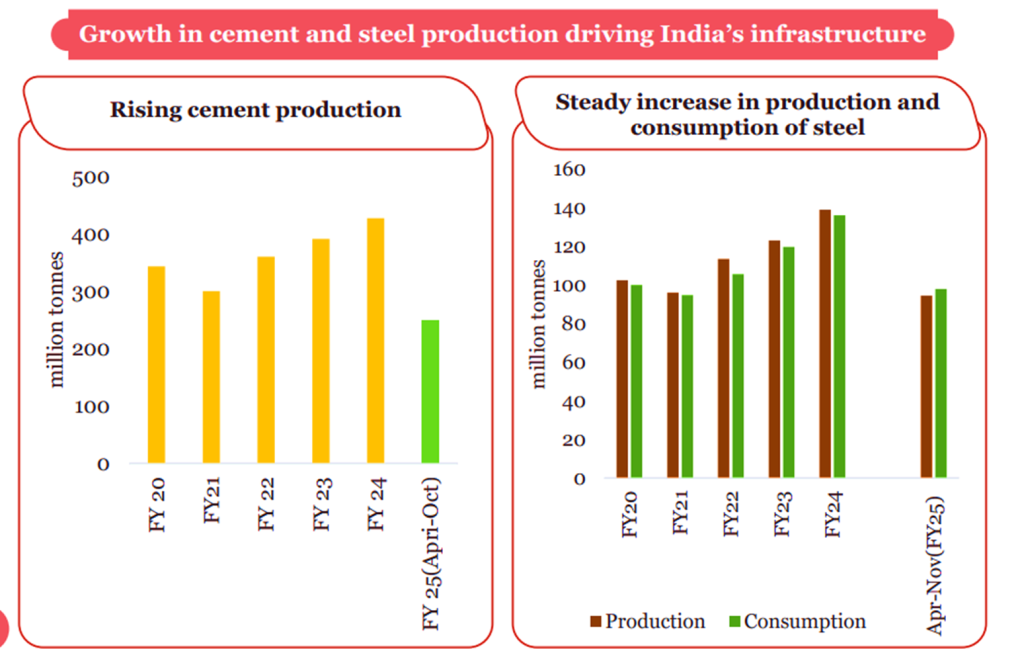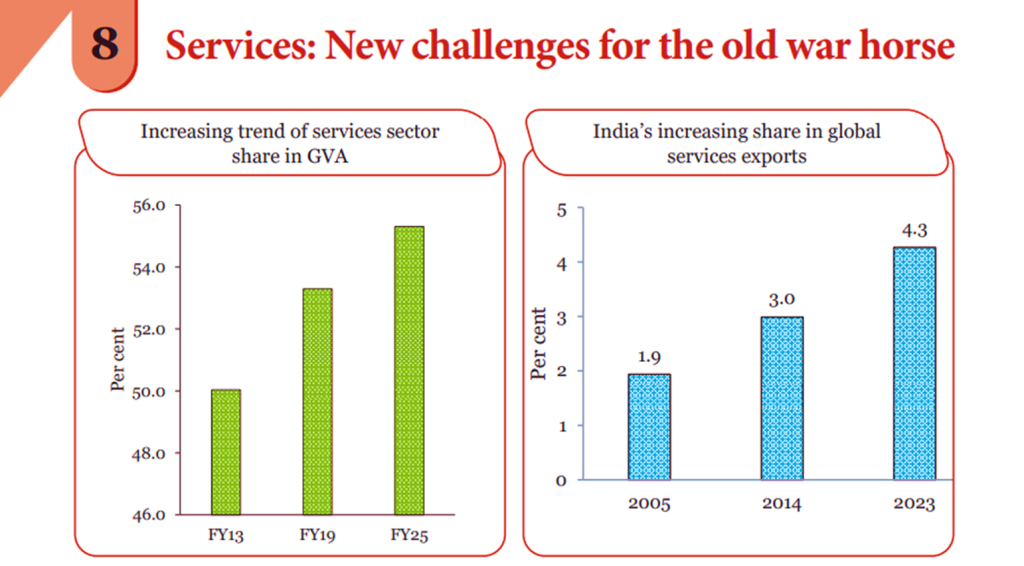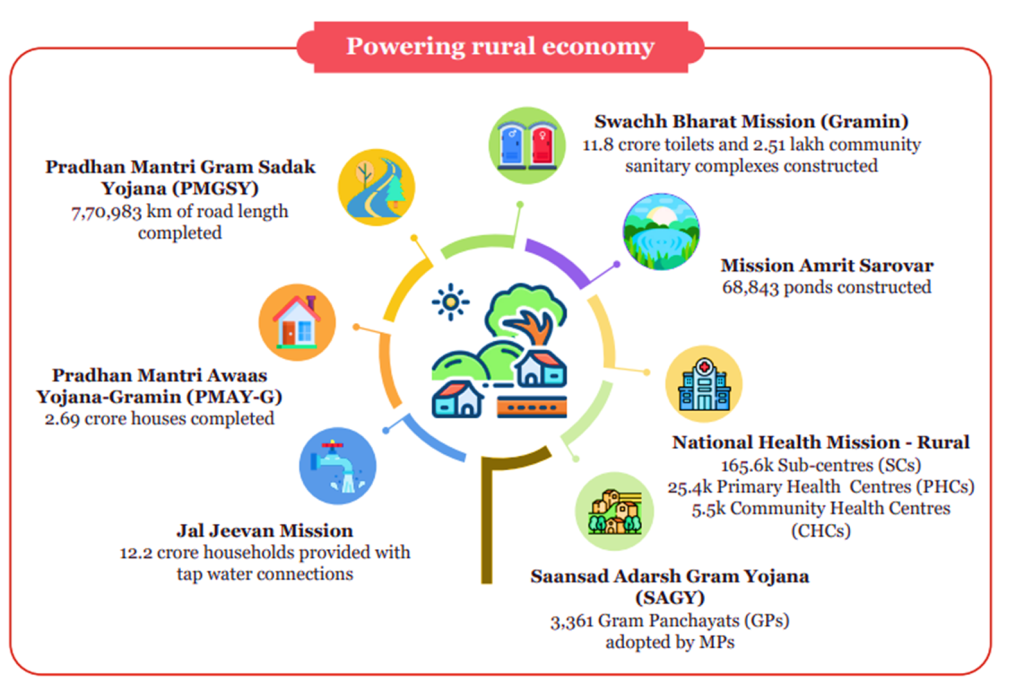Economic Survey 2024-25, presented by Finance Minister Nirmala Sitharaman on January 31, 2025, offers a comprehensive analysis of India’s economic performance over the past year and provides projections for the upcoming fiscal year. Authored by Chief Economic Adviser V. Anantha Nageswaran, the survey is structured into several chapters, each focusing on distinct facets of the economy. Below is a detailed examination of each chapter, highlighting key facts and figures pertinent for academic and competitive examinations.
Economic Survey 2025
Chapter 1: State of the Economy – Steady as She Goes
The survey projects a real GDP growth rate between 6.3% and 6.8% for the fiscal year 2025-26, following a forecasted growth of 6.4% for 2024-25, which marks a four-year low. This cautious optimism is underpinned by factors such as robust rural demand, a rebound in agricultural production, and stable macroeconomic conditions. However, the survey also flags potential risks, including geopolitical uncertainties and possible commodity price shocks.
Chapter 2: Fiscal Developments
In the fiscal year 2024-25, the government’s fiscal deficit stood at 6.4% of GDP, aligning with the budgetary target. This was achieved through prudent expenditure management and buoyant tax revenues. The survey emphasizes the importance of continued fiscal consolidation to ensure long-term economic stability.
Chapter 3: External Sector
India’s merchandise exports reached $420 billion in 2024-25, while imports were recorded at $610 billion, resulting in a trade deficit of $190 billion. The services sector, particularly IT and IT-enabled services, contributed significantly to narrowing the current account deficit, which stood at 1.5% of GDP.
Chapter 4: Monetary Management and Financial Intermediation
The Reserve Bank of India maintained an accommodative monetary policy stance, keeping the repo rate at 4% throughout 2024-25 to support economic recovery. Credit growth to the industrial sector accelerated to 7.6%, reflecting improved business confidence and investment activity.
Chapter 5: Prices and Inflation
The Consumer Price Index (CPI) inflation moderated to 4.37% in 2024, within the RBI’s target range of 4% ± 2%. Food inflation remained a concern due to supply-side disruptions, prompting the government to consider policy measures to stabilize prices.
Chapter 6: Sustainable Development and Climate Change
India made significant strides in renewable energy, with installed capacity reaching 175 GW, accounting for 40% of the total energy mix. The survey highlights the need for continued investment in green technologies to meet the country’s climate commitments.
Chapter 7: Agriculture and Food Management
Agricultural production rebounded, with food grain output estimated at 310 million tonnes, a 3.5% increase from the previous year. The survey underscores the importance of enhancing supply chain efficiencies and promoting agri-tech innovations to sustain this momentum.
Chapter 8: Industry and Infrastructure
The Index of Industrial Production (IIP) grew by 5.2% in 2024-25, driven by manufacturing and construction activities. Infrastructure development received a boost with a 34% increase in capital expenditure, focusing on transportation and energy sectors.
Chapter 9: Services Sector
The services sector remained a cornerstone of the economy, contributing 54% to the Gross Value Added (GVA). Notably, the IT-BPM industry expanded by 9%, reinforcing India’s position as a global services hub.
Chapter 10: Social Infrastructure, Employment, and Human Development
The survey reports an improvement in social indicators, with the literacy rate reaching 78% and life expectancy at 70 years. However, challenges persist in employment generation, with the unemployment rate at 6.5%. The survey advocates for skill development initiatives to enhance employability.
Chapter 11: Economic Reforms and Policy Initiatives
The government implemented significant tax reforms, including increasing the personal income tax threshold to ₹1.2 million and introducing new tax brackets to stimulate consumption and investment. Additionally, a high-level committee was established to review regulatory reforms, aiming to reduce compliance burdens and encourage investment.
In conclusion, the Economic Survey 2024-25 presents a nuanced analysis of India’s economic trajectory, balancing optimism with caution. While acknowledging the achievements in various sectors, it also highlights areas requiring policy attention to ensure sustainable and inclusive growth.
